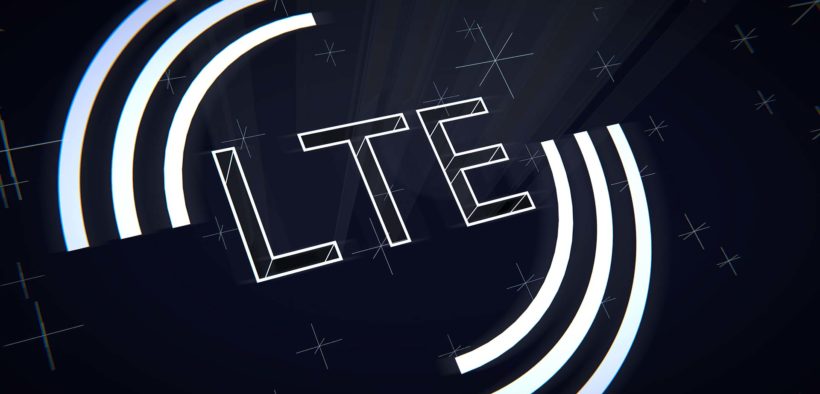What is CBRS? Webinar Q&A
Share

Bring it CBRS, we are ready for you!
Or at least those who attended our recent webinar are : ) The recent discussion we had with Federated Wireless, SpiderCloud Wireless and Clear to Send have certainly given us a better picture of what CBRS is, how it may influence the wireless industry and what network design challenges it might bring.
Haven’t attended the webinar? Watch “What is CBRS” webinar recording here »
Unfortunately we didn’t have the time to answer all of the webinar questions in one hour. So we decided to combine the answers provided by Jyotin Basrur (Director of Product Management, Federated Wireless), Art King (Director of Enterprise, SpiderCloud Wireless), Seth Roy (VP Product Management at iBwave) and Marc-Antoine Lamontagne (Director, Technical Product Management at iBwave) in this blog.
Enjoy!
Are any of these indoor customers commercial offices? If so, is this mainly for IoT applications or are any mobile?
Jyotin: The indoor deployments cover a number of use cases. The applications are varied – from security monitoring, IoT, etc.
Are there any concerns about the propagation model that will be used to determine the optimum spectrum grants while minimizing the interference between users?
Marc-Antoine: No. The iBwave FRT Propagation Model along with the modeling of LTE in iBwave Design will provide the KPI (RSRP, RSRQ, Overlapping Zones) which will allow the designer to optimize the coverage and capacity while limiting the interference.
Can an environment be designated as ‘isolated’ up to a certain tx power, thus full spectrum availability in each isolated building?
Jyotin: Yes. Based on the nature and Tx power of the deployment, it can be sufficiently isolated and therefore take advantage of the full 150MHz of spectrum.
Is the Coexistence Manager defined by the CBRS Alliance an entity within the SAS?
Jyotin: Yes, it can be an entity within the SAS.
Do all OnGo certified devices have to register within SAS as a member of the CBRS alliance coexistence group?
Art: No, devices are normal handsets that have support for LTE Band 48. The radio infrastructure is the part of the system architecture that interacts with the SAS.
Is CBSD or will it be able to operate on millimeter waves band (e.g., 24–86 GHz)?
Jyotin: millimeter wave is not a part of the OnGo spectrum.
Does OnGo require special CBRS handsets?
Art: OnGo operates in LTE Band 48. The mobile device simply has to have support for that LTE band on-board.
Does the private LTE company have to have their own SIM and phones?
Art: Yes, Private LTE will use a separate EPC (core network) that will have to manage its own set of SIMs. Single SIM phones will live only on the private LTE system. Dual SIM phones could attach to a public service provider LTE network and a private LTE network.
What is the expected timing of the FCC Auction?
Jyotin: The FCC auction for PAL spectrum is expected to take place in 2019.
For CBRS, would there be a clearinghouse for billing just like a regular roaming?
Jyotin: Use of CBRS and its associated billing by operators will likely be transparent too and part of the existing means used by operators to bill for usage, including the use of clearinghouses. This will likely look similar to how operators have roaming agreements and exchange billing records regardless of which licensed spectrum they use to deliver the service.
For GAA users, the WInnForum spec indicates requirements for determination of potential interference, for the resolution of conflicting users of the band is for FFS. Given the projections of CBRS deployments by the end of the year for GAA users, how do coexistence and interference coordination expected to work?
Jyotin: Significant work has already been completed in the area of specifications for coexistence both in the WInnForumas well as OnGo (CBRS Alliance) to allow implementation by SASs.
For MNOs, What is the value for money of converting or tuning current infrastructure to CBRS? How can we manage RF interference? Since CBRS is based on spectrum detection and allocation/sharing, a congested network might arise.
Art: OnGo can be used as a preferred spectrum (where mobiles want to attach to it first) as an outdoor macro underlay network for a capacity layer or indoor enterprise network to offload the outdoor mobile network of office buildings. Spectrum engineering is easier if the spectrum used for underlay/indoor enterprise is not operating in the outdoor macro spectrum. From an RF interference perspective, the SAS’ role in spectrum management is to prevent interference by allocating spectrum to each OnGo CBSD that takes into account latitude, longitude, altitude, radiated power, and other factors such that frequency adjacent networks that could “hear” the OnGo network are far enough away that interference issues are minimized.
For PAL, what would be the cost for 10 MHz, any idea?
Art: No, the FCC rules for auction have not emerged yet. The cost will most likely be driven by demand. In many rural areas, the spectrum may be available at relatively low cost due to lack of population density.
How does SAS affect rural WISP FWA operators frequency planning methodologies?
Art: If we assume that a WISP acquires PAL licenses for a geographic area (each channel is 10MHz wide ), then RF planning would deal with simple propagation from a tower at 3.5 GHz. Potentially, multiple PAL channels could be used to sectorize a tower so channel(s) can be pointed in different directions.
How tight geographically will GAA reuse be?
Art: The reuse is related to the power radiated by the infrastructure. Indoor systems are capped at 1W, and there are from 8 to 15 10MHz channels available. In the areas where PAL channels are 100% allocated, 8 channels maximum will be available. The SAS will allocate the GAA channels as far apart as possible to minimize co-channel interference issues.
How will traditional users convent back to MSO from a private LTE network?
Art: Assuming their mobile device has the MSO frequency available, single SIM devices will require SIM swap and dual-SIM devices could move between networks more gracefully.
I don’t see band 48 support on iPhone XS or Note 9. What does today’s CBRS network look like? For IoT or fixed wireless currently?
Jyotin: Commercial handset support for CBRS is expected to be announced soon. However, CPEs for the Fixed wireless segment are now available for immediate deployment.
If an operator wishes to deploy a wireless LTE network with multiple eNBs. Do they have to register each eNB as a CBSD and let SAS choose channels individually, or can the operator ask to use the same channel for all eNBs?
Jyotin: Both scenarios are possible. The protocols allow flexibility to define CBSDs as a group that desires a common chunk of the spectrum or let the SAS provide each CBSD its own spectrum.
If I have an AP which can also do CBRS, the traffic routes through my own network. What do the Carrier’s think of this? What kind of bandwidth is recommended for that? What kind of encryption is involved?
Art: Service providers have regulatory obligations for both customer privacy and security. For enterprise owned networks, how they interact with the “core networks” of the mobile operators is a new frontier that will require some joint work with mobile operators, 3rd party providers, and enterprises to define the relationships. For today’s indoor systems, we recommend at least 50-100 Mbps of headroom be available in the enterprise’s Internet “last mile” to support mobile operator connections. Encryption on terrestrial links tends to be IPSec and RF links is AES Snow.
If the SAS does real-time frequency planning for GAA operators, what algorithm does it use? Does it try to implement a noise-limited scenario?
Jyotin: The SAS does a semi-static assignment of spectrum. It is not real-time. The algorithms and details of how spectrum is allotted are specified in OnGo (CBRS Alliance) specification documents.
If the spectrum allocation is configured to first respect or preserve incumbents – how can one design for SLAs?
Art: The SAS is designed to resolve any conflicts automatically by shifting spectrum use in the background. When you also consider that the OnGo spectrum allocation is more than any incumbent uses, the SAS should be able to shift the CBSD (radio) over to an unused channel without the mobile device owners noticing the change.
If the spectrum is unlicensed how is it assigned to each wireless carrier? How to avoid collisions between each other?
Jyotin: The SAS takes care of allotting orthogonal chunks of the spectrum based on estimations of propagations from radios of different operators.
If using a Private LTE network (OnGo) does my ATT handset use my ATT data plan or is it like a Wi-Fi?
Seth: OnGo is an LTE-TDD technology that will allow the owner to create a neutral host network so that the subscriber base would seamlessly utilize their respective network plans. OnGo is not a Wi-Fi technology.
In the case when the incumbent user requests an unscheduled evacuation of CBRS spectrum to use it, how does CBRS and SAS response?
Jyotin: The SAS determines which of the radios in the neighborhood of the incumbent need to be vacated from the spectrum. Only co-channel radios and those that contribute a significant portion of the interference will be directed by the SAS to cease operation on those channels. SAS will find parts of the spectrum that are unused and direct the radios to that part in order to continue operation.
Is CBRS only for the US?
Art: CBRS or OnGo is currently a shared spectrum and for use only in the US.
Is CBRS TDD or FDD? If it is TDD, is it possible to carrier aggregate with other licensed band LTE FDD carriers?
Seth: OnGo (CBRS) utilizes LTE-TDD technology. Theoretically, carrier aggregation should be possible on other bands. In practice, this may not be feasible due to the ownership and flexibility of OnGo.
Is it going to be an independent band or it is going to be like Carrier aggregation?
Seth: OnGo utilizes band 48.
Is there capability in the CBSD to allow preferential treatment to one set of users?
Art: The main case of that need today is in Public Safety to prioritize mobile devices for first responders.
Just to be clear, we need client devices to be upgraded for OnGo capability before the new spectrum can be used, right? Looking to solve a problem area servicing public clients currently without LTE coverage (mall with thick concrete walls).
Art: Yes, that is correct. To solve a problem today, traditional small cells or DAS solutions are your best choice.
My question has to do with the ease of integration with the existing LTE networks. How easy is it?
Art: First, let us assume that mobile devices with LTE Band 48 are in the market. From conversations with mobile operators, we understand that if the new OnGo LTE infrastructure is provided by the operator, is advertising their network ID (called a PLMN), and all the neighbor lists are current; the mobile device just needs to “prefer” the OnGo network for handovers to occur between the LTE networks.
Neutral host LTE small cell solutions are available today for medium-sized enterprises. Mobile operators are resistant to sharing radio networks with other operators. Why would CBRS change that?
Art: As an industry, this is the problem to work through. The big barrier in the past was a lack of neutral spectrum. OnGo takes that issue off the table. That leaves us with sharing radio networks and agreement on common design parameters as hurdles. For example, if the big four operators in the USA all have different design requirements that result in four different radio counts and their design requirements must be satisfied before they allow a core network connection, then we need a resolution as an industry. Perhaps the mobile operators will allow OnGo connections without approving network design, but historically that has not been the case.
Could you tell more about the RF constraints that TD-LTE will place in the deployment of CBRS such as communication between SAS and CBSD?
Jyotin: SAS to CBSD communication does not use airlink capacity and hence does not impact TD-LTE capacity on either the downlink or uplink. In the case of a CPE communicating with its Access Point/Base Station, some of the airlink capacity will be used by the SAS-CBSD protocol. This is an extremely small portion of the overall available capacity on the TD-LTE airlink – less than a few kilobits per second.
One slide said there were 15 equipment partners. How many of those 15 are CBRS radio units?
Jyotin: All of those are CBRS radio units. However, some of the vendors of CBRS radio units use a Domain Proxy sitting in the core network to proxy messages from the CBSDs.
What are bandwidth requirements needed to maintain LTE voice experience?
Seth: OnGo currently supports 10 Mhz channels which will provide a quality LTE voice experience. Data capacity requirements should be considered when requesting channels on the OnGo network.
What do we need equipment wise?
Art:
- Internet headroom so that CBSD can connect to SAS and mobile devices can connect to their core network
- OnGo Radio Access Network infrastructure
- Mobile devices that have the OnGo LTE Band 48 radio
What is the anticipated “density” of the ESCs required to ensure the appropriate resolution?
Jyotin: This varies based on the coastline topology as well as the size of the coastline segment that needs to be protected. Typically a sensor is needed every 30-50Kms on the coast.
What is the maximum EIRP for CBRS? How does iBwave calculate the RFE?
Art: There is no “typical” EIRP as SON algorithms dynamically optimize it for the best relationship with other adjacent cells. The use of the maximum EIRP supplied by the radio vendor in a planning tool would be the recommended approach. To recap from our Webinar, maximum OnGo EIRP for Indoor is 30dBm (1 watt), and Outdoor is 47dBm (50 watts).
Marc-Antoine: Assuming RFE means RF Emission, iBwave calculates regulating compliance with the international standards (FCC, ICNIRP, and others) by calculating the safety distance considering the output power, antenna patterns and contribution from all the wireless services.
What’s the typical system/bandwidth overhead used by the SAS?
Jyotin: The communication to the SAS from the CBSD uses very little capacity. It does not use any airlink capacity. It does use a few kilobits of capacity to maintain Heartbeats between the CBSD and the SAS.
When do you expect the FCC auction to occur for CBRS?
Jyotin: The FCC auction for PAL spectrum is expected to happen in 2019.
When will the FCC “Nail Down” the spectrum plan and integrate it into the regulatory structure?
Art: Overall spectrum plan is completed along with the GAA structure. The PAL rules/structure is the part that is up in the air from FCC perspective.
Where is the SAS located and what hardware is required to connect to the SAS?
Jyotin: Most, if not all, SASs are cloud-based implementations. As long as you have a connection to the Internet, you can access the SAS services.
Which CBRS frequency spectrum is not used by Tier 1 or 2 (at least 80MHz)?
Art: A Tier I (incumbent) can be anywhere in the 150MHz, Tier 2 (PAL) is lower 80 MHz, Tier 3 (GAA) is across the full 150MHz minus the known PAL spectrum in use in that geographic area.
Who is responsible/pays for the deployment of, and manages, SAS and their associated sensors in each census tract?
Jyotin: SAS Vendors deploy and manage both the SAS and ESC components required to provide OnGo spectrum. They may in turn charge OnGo operators for allotting OnGo spectrum.
Why do you think enterprise customers will be more willing to follow this model when they have been somewhat hesitant to do so in the past? There are very few enterprise DAS in the market.
Art: If a shareable infrastructure can be built in the enterprise for the same cost per square foot as a typical “voice grade” Wi-Fi, then we have a lot of interested buyers. Without a suitable sharing model from both technology and business perspective, some parts of OnGo market may be on hold until the suitable model emerges.
Why would a CBSD (CBRS AP) have a larger coverage with the same amount of Transmit power than a WiFi AP?
Art: Not aware of published research in this area to confirm/deny the claim. However, the major difference between the two technologies is that Wi-Fi has a Listen Before Talk “LBT” MAC layer vs. LTE’s Scheduled MAC layer. It could be that the timers in LBT might restrict a Wi-Fi coverage radius to X meters (corresponding to x microseconds of time).
Will there be a fee for SAS access?
Jyotin: Yes. Each SAS Vendor has their own pricing structure and model.
−−−−−−−−−−The end−−−−−−−−−−
Still have questions about CBRS? Share them in the comments to this blog and we will try to answer.
- Risers vs Vias – New Feature How-to Guide - September 16, 2019
- What is CBRS? Webinar Q&A - October 28, 2018
- The Largest Database in the Wireless Industry Today - August 20, 2018



























Many Thanks
You are welcome, Najib!